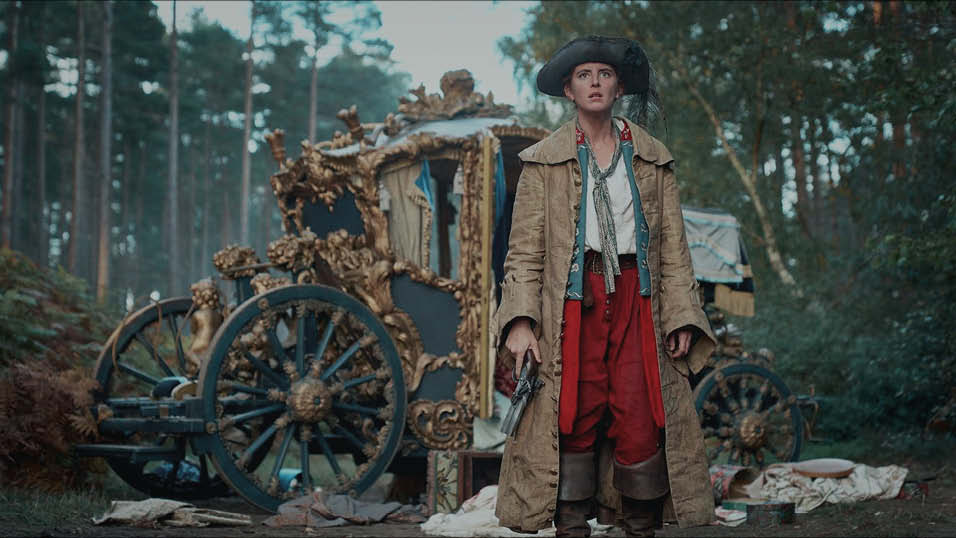From the start this series, currently being shown on Channel 5, had a lot going for it: amazing locations, exciting action and a great character doing extraordinary things.
But it lacked one crucial factor – any sort of hands-on control for the production team. We were to film an elite athlete as he raced hundreds of kilometers through remote, uncompromising terrain.
None of the normal rules of filming would apply.
The Zig Zag/ GroupM Entertainment series Extreme Endurance – Race to the Pole followed extreme environment athlete Richard Parks as he competed in endurance events all over the World.
The series culminates in Richard attempting to set a new world record for skiing solo and unsupported from the coast of Antarctica to the South Pole.
The events came in different shapes and sizes – mountain biking in Nepal, an ultra marathon in the Amazon rainforest and a double triathlon in Wales – but all involved Richard covering a lot of ground each day.
There would be no way to predict when a critical story moment would happen – when would Richard reach his lowest ebb, slide head first down a muddy hillside or stand on an anaconda?
We needed coverage at all times but running or cycling along side Richard over these huge distances wasn’t going to be possible.
The solution was for each of the five crew members to have their own camera (Canon C300 and XF305s) and operate as separate units.
Go Pro blitz
Step two was to cover Richard in GoPros: on his shoulder, on an arm poking out of his backpack, hanging off his head and one on his wrist for selfies.
Sound recordist Jon Thomas rigged Richard’s backpack with a lav mic running into a Zaxcom recorder so everything Rich said all day would be recorded.
This worked well for the mountain biking and ultra marathon episodes.
Then came the ‘The Brutal’ – a double Ironman-distance triathlon in Wales.
We needed to keep up with Richard on the bike leg so we rigged out the back of a car with a Kenyon Systems 6X gyro, sitting in a cradle I’d designed and built myself. We employed a qualified racing driver, fitted a harness system so I couldn’t fall out of the open boot and proceeded to blast around the winding roads of Snowdon shooting awesome footage of Richard cycling.
The race carried on into the night so we did a quick change to infrared cameras (including an Infrared GoPro on Richard’s bike) and pressed on.
Antarctica
After ‘The Brutal’ our thoughts turned to the big one – Antarctica.
This leg had a further level of complication – Richard’s record attempt required him to be ‘solo and unassisted’. So now we not only had no control of what we were filming but we couldn’t even be on the shoot.
This meant Richard would have to film himself. Prior to the shoot Patrick spent weeks finessing Richard’s self-shooting kit.
It needed to be lightweight but also have back-up options should parts fail in the temperatures – which would potentially be as low as -40˚C.
As Richard will tell you all successful expeditions grow from careful planning and Patrick and I tested every piece of kit to -40˙C in the University of South Wales’ environment chamber.
This was invaluable information – we now knew what would and wouldn’t work.
In Antarctica, series producer Dale Templar and I had a week to film Richard’s preparations and capture some shots of him skiing.
Dale then flew back to the real world leaving Richard and I to wait for the weather to break and the expedition to get underway.
In this time Richard repeatedly refined his personal kit until there wasn’t an ounce of spare weight anywhere – no spare clothes, no spare food, no spare skis – this was an all or nothing expedition.
Bare essentials
One day he clearly had something on his mind and we sat down with all the camera kit laid out on a table in front of us.
Having now seen Richard’s obsessive, minimalist packing it was clear that this was way too much kit for him to carry.
Together we cut it down. After a few hours we’d halved his camera kit to just 6kg. He only had the bare essentials: one Canon XF105 (from which Richard had ripped all extraneous parts) and two GoPros. No spares of anything.
It was a big risk but the right call. Ultimately, if Richard failed in his record attempt because he was carrying 12kg of camera gear it would have been a disaster for him and also for the production.
Two days later Richard and I flew from the basecamp to his starting point and I filmed as he set off, solo and unassisted and with no spare camera batteries, into 1200km of white unknown.
As we circled him on the flight back to base he was already the faintest of dots in a sparkling sea of white. The action had only just started and the entire production team was on its way home!
I just hoped he’d remembered to press record on those GoPros.
Staff Reporter
Share this story

















